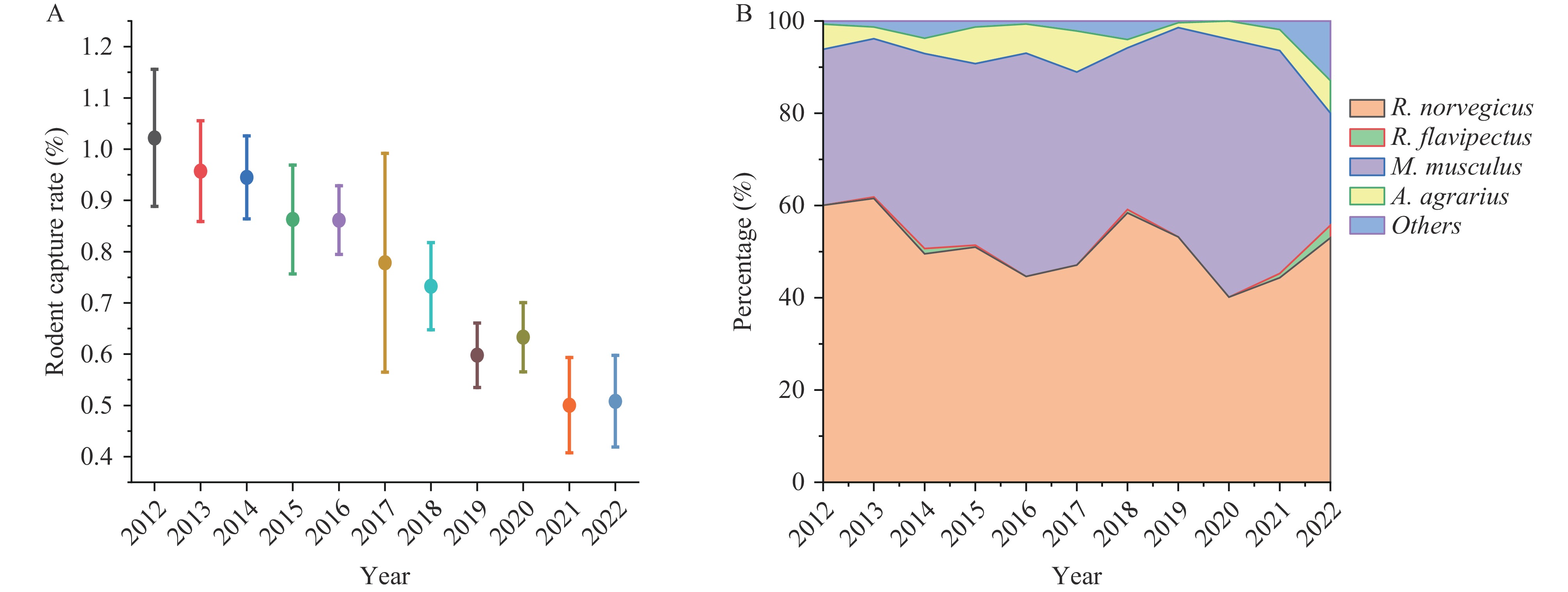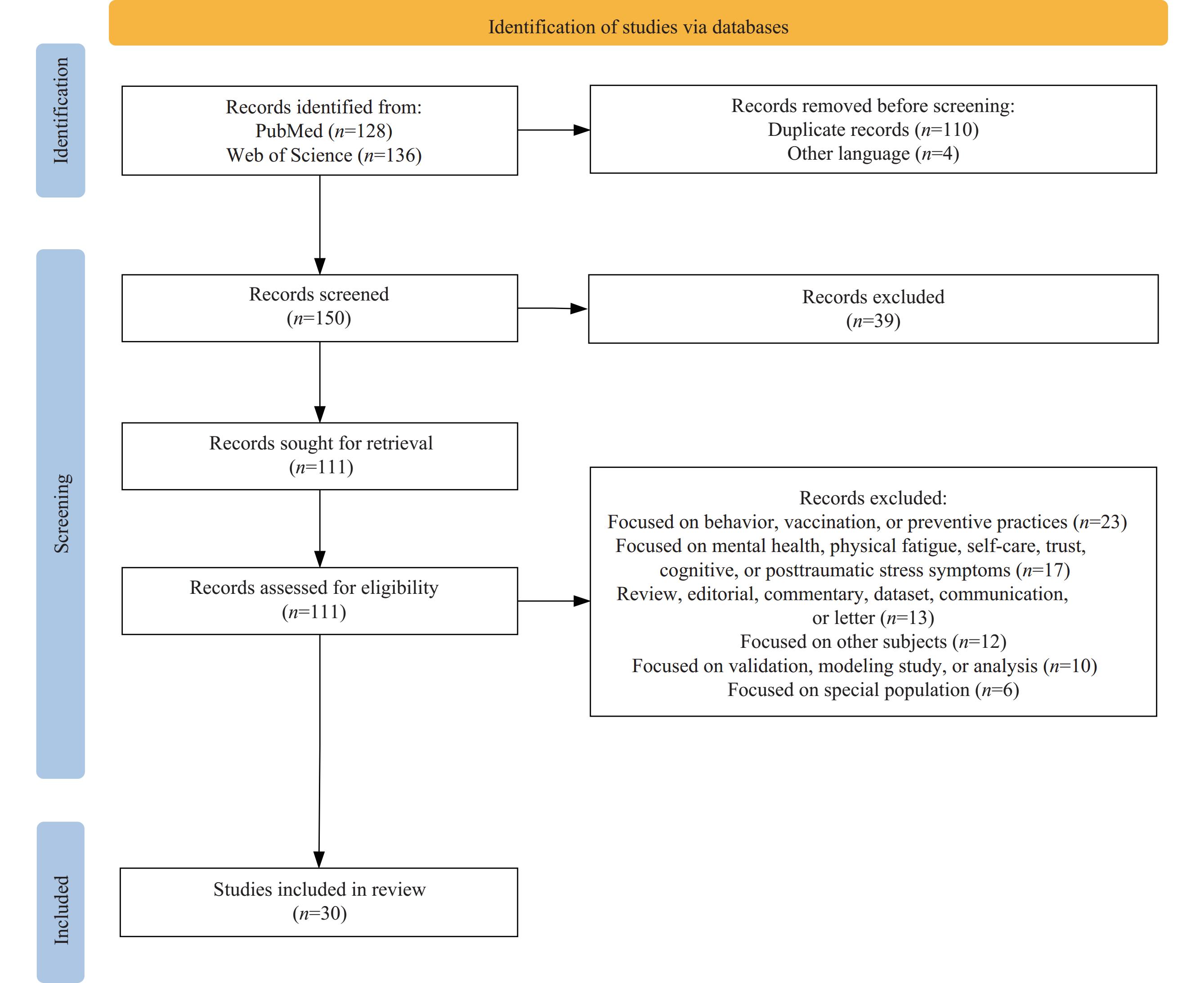2024 Vol. 6, No. 36
Influenza is a communicable respiratory disease that causes annual epidemics and occasional unpredictable pandemics. This study examines the occurrence of two unexpected influenza peaks within the year 2023.
Influenza-like illness (ILI) data were reported, and specimens of ILI were collected by designated surveillance hospitals. Positive cases were confirmed using real-time reverse transcription polymerase chain reaction (rRT-PCR) testing conducted at national surveillance network laboratories. The data were then submitted to the Chinese Influenza Surveillance Information System.
From December 2022 to January 2023, influenza activity was minimal until a spring epidemic began in February, peaking in late March. The outbreak spread from the north to the south, with A(H1N1)pdm09 being the predominant strain and A(H3N2) also circulating concurrently. The positivity rate in northern and southern provincial-level administrative divisions (PLADs) reached 60.0% (week 10) and 60.2% (week 13), respectively, before dropping to below 5% from May to August. Subsequently, rates surged starting in week 41 in the south and week 44 in the north, peaking at 54.4% (week 50) and 44.0% (week 49), respectively, and remained high until the end of 2023. A(H3N2) became the prevailing strain, with a notable increase in B/Victoria lineage viruses from December, resulting in two peaks during the 2023 influenza season.
The pattern of the influenza epidemic shifted due to the coronavirus disease 2019 (COVID-19) outbreak and is gradually returning to its usual seasonal and intensity patterns. It is, therefore, crucial to continuously strengthen influenza surveillance, enhance the influenza surveillance network, and lay the groundwork for advancing integrated surveillance of multiple pathogens in China.
Rodents are hosts of a wide range of zoonotic disease pathogens which threaten human health. However, comprehensive investigations of rodent ecology and etiology in Shandong are lacking. Thus, we aimed to analyze rodent ecology and infection with relevant pathogens in Shandong Province, China.
Rodent survey data collected from 2012 to 2022 in Shandong Province were used in this study. Rodents captured from 2020 to 2022 were identified to species and tested for pathogens.
From 2012 to 2022, 4,145 rodents were captured, with an average capture rate of 0.70%. High capture rates were observed in rural residential areas and other habitats, such as farmland and forestland. Rattus norvegicus (R. norvegicus) was the dominant species, followed by Mus musculus (M. musculus). The regions with the highest capture rates of R. norvegicus were Dongying (0.82%) and Heze (0.63%), while M. musculus was more prevalent in Dongying (0.81%) and Weihai (0.56%). Rodent capture rates were highest between March and September. The positive detection rates of Hantavirus (HV), Leptospira interrogans (L. interrogans), Rickettsia typhi (R. typhi), Anaplasma phagocytophilum (A. phagocytophilum), and Francisella tularensis (F. tularensis) in rodents were 2.58%, 1.10%, 0.94%, 0.16%, and 0.19%, respectively.
The rodent capture rate in human habitation environments has trended downward in Shandong Province, with R. norvegicus and M. musculus being the dominant species. Rodent infection risk from HV, L. interrogans, and R. typhi showed seasonal variation. Strengthening rodent surveillance and maintaining a low capture rate of host animals could be pivotal for preventing and controlling relevant rodent-borne diseases in high-risk areas.
The syndromic surveillance system, exemplified by the influenza-like illness (ILI) surveillance system, has long been crucial in providing early warnings of influenza epidemics.
The analysis revealed that employing reported influenza case data from the nationwide Notifiable Infectious Diseases Reporting Information System (NIDRIS) enhanced the early detection of influenza epidemics, particularly within the context of multiple respiratory pathogens circulating concurrently.
The NIDRIS, characterized by its extensive coverage, obligatory reporting, high specificity, and real-time data transmission, offers a valuable tool for the effective early detection of influenza epidemics. Utilizing this system could enhance preparedness and responses to such health crises, potentially mitigating their impact on public health.
The rapid emergence and widespread transmission of severe acute respiratory syndrome coronavirus 2 (SARS-CoV-2) have prompted governments worldwide to enact policies and measures to manage the virus’s spread. These interventions have substantially contributed to controlling disease transmission. However, they have also significantly disrupted daily life, leading to increased public fatigue and resistance to sustained control measures, a phenomenon known as pandemic fatigue. To develop a comprehensive understanding of pandemic fatigue, this review systematically explores the concept and identifies quantitative indicators for measuring it. We reviewed studies on pandemic fatigue across various countries, summarized the contributing factors, and analyzed its impact on personal protective behaviors. Our findings indicate that the enforcement of health measures significantly influences the onset of pandemic fatigue, while individual perceptions of risk can negatively affect personal protective behaviors, creating a feedback loop with increasing fatigue. These results underscore the importance of considering the current severity of the pandemic and individual decision-making processes in the implementation of interventions. Enhancing our understanding of pandemic fatigue is essential for developing effective policy responses in preparation for future potential epidemics.
This study examines the socioeconomic and public health effects of a recent respiratory illness outbreak in northern China, focusing on Beijing following the lifting of coronavirus disease 2019 (COVID-19) restrictions. It analyzes the implications of increased influenza A (H3N2) and Mycoplasma pneumoniae cases on urban health systems and economic structures. This mixed-methods study integrated a review of academic and governmental literature, a quantitative analysis of public health data, and a qualitative assessment of response strategies. Findings indicate a significant increase in respiratory illnesses in late 2023, prompting a proactive response from health authorities that involved expanded hospital capacity and intensified surveillance. Challenges, including resource limitations and public health fatigue, persisted, affecting response efficacy. Effective outbreak management was achieved through immediate health responses, although the event highlighted the need for improved infrastructure, surveillance, and policy frameworks. Recommendations emphasize the importance of international collaboration and comprehensive preparedness plans to strengthen global health security for future epidemics.



 Subscribe for E-mail Alerts
Subscribe for E-mail Alerts CCDC Weekly RSS Feed
CCDC Weekly RSS Feed


